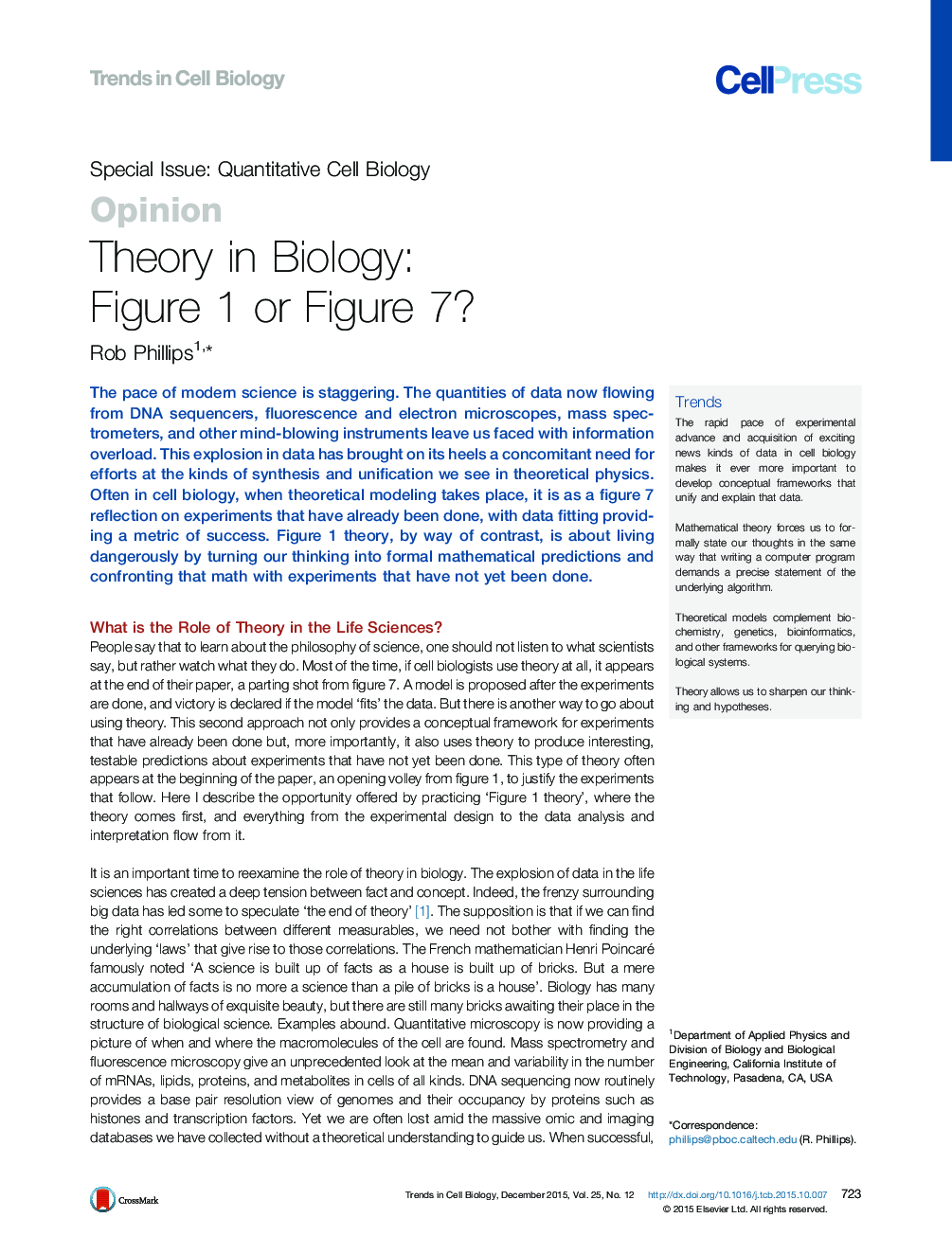| Article ID | Journal | Published Year | Pages | File Type |
|---|---|---|---|---|
| 2204255 | Trends in Cell Biology | 2015 | 7 Pages |
The pace of modern science is staggering. The quantities of data now flowing from DNA sequencers, fluorescence and electron microscopes, mass spectrometers, and other mind-blowing instruments leave us faced with information overload. This explosion in data has brought on its heels a concomitant need for efforts at the kinds of synthesis and unification we see in theoretical physics. Often in cell biology, when theoretical modeling takes place, it is as a figure 7 reflection on experiments that have already been done, with data fitting providing a metric of success. Figure 1 theory, by way of contrast, is about living dangerously by turning our thinking into formal mathematical predictions and confronting that math with experiments that have not yet been done.
TrendsThe rapid pace of experimental advance and acquisition of exciting news kinds of data in cell biology makes it ever more important to develop conceptual frameworks that unify and explain that data.Mathematical theory forces us to formally state our thoughts in the same way that writing a computer program demands a precise statement of the underlying algorithm.Theoretical models complement biochemistry, genetics, bioinformatics, and other frameworks for querying biological systems.Theory allows us to sharpen our thinking and hypotheses.
